News
Water Roller Coaster | When Speed Embraces the Splash: Igniting a Water Carnival Feast 2025/12/30 Have you ever imagined experiencing the extreme speed of a roller coaster on a winding waterway?Have you ever craved the dual shock of weightlessness and centrifugal force amidst cool splashes?Introdu... Double Storm, Ultimate Speed — The Interstellar Spiral and Giant Wave Rolling Combination Ignites Water Park Thrills 2025/12/21 In today’s amusement market, where guests constantly demand extreme experiences, single-dimensional thrills can no longer satisfy increasingly discerning visitors. As an industry innovation leader an... Technology Forges Extraordinary Experiences, Professionalism Sets Industry Benchmarks — Haisan Amusement Wins 2025/12/13 Technology Forges Extraordinary Experiences, Professionalism Sets Industry Benchmarks— Haisan Amusement Wins "Outstanding Water Rides Award" at the 2025 Golden Crown AwardsRecently, the 202... The Super Rolling Slide: A Revolution in Rotation and Dynamic Water Play 2025/11/26 In an era where guests constantly demand extreme thrills, water play has evolved beyond simple speed into a sensory art form engaging with gravity. As an industry innovation leader and full-chain serv... Haisan Amusement Makes a Splash in Zhengzhou, Leading a New Era of Water Amusement at the 2025 China Leisure Expo! 2025/10/23 From October 22-24, 2025, the 42nd CAAPA Amusement Facilities and Equipment Expo—the 2025 China (Zhengzhou) Tourism & Leisure Entertainment Industry Expo—was held at the Zhengzhou International... From Feedback to Five Stars: An Insider's Guide to Upgrading Your Water Park Guest Experience 2025/09/12 A water park's competitive edge ultimately comes down to one thing: the guest experience. From attraction design to daily operations, every detail influences a visitor's decision to return and... The Importance of the Operations Team in Water Park Project 2025/07/14 Reasonable Selection of Amusement Equipment for Water Park ProjectReasonable selection of amusement equipment is crucial for the success of a water park. Experienced operation teams can provide ration... Haisan Amusement Shines at IAAPA Expo Asia, Unlocking the Infinite Possibilities of Water Amusement 2025/07/04 From July 1st to 3rd, the IAAPA Expo Asia celebrated its grand opening in Shanghai! Hosted by the International Association of Amusement Parks and Attractions (IAAPA)—the largest international trade ... Oriental Eden Qingdao Celebrates Grand Opening on June 28, Unveiling an Immersive Exploration of 'Life with Water' 2025/07/04 Qingdao, China – Nestled on Torch Road in Qingdao's High-tech Zone, Oriental Eden is a world-class, comprehensive cultural tourism project. Spanning 1200 acres with a core project area of 400 acr... Ji'an Happyvanko Water Park Opens June 20, Unleashing a Summer Splash Carnival in Central Jiangxi 2025/06/20 JI'AN, China – Ji'an Happyvanko World, a theme park centered on Luling culture and dedicated to the principle of ecological civilization, has been masterfully planned with a spatial structure... Central China's Flagship Water Park Debuts! Wuhan Kaiyuan Senbo Resort Park Celebrates Grand Opening on June 13 2025/06/16 WUHAN, June 13 – Wuhan Urban Construction Kaiyuan Senbo Resort Park, Central China's first "one-stop" suburban eco-resort for all ages, seasons, and times, celebrated its grand opening ... How to Improve Utilization Rate of Water Park Project? 2025/06/14 The rapid development of the water park industry has led to the presence of water parks of all sizes throughout the country, making it no longer a new and fresh concept for visitors. Therefore, the er... Central Ganzhou's First Comprehensive Modern Theme Park! Water Park Equipment at Jiangxi Ji'an Joy World Enters Final Testing Phase, Aquatic Adventures Soon to be Unlocked. 2025/06/06 JI'AN, JIANGXI – Located in the Houhe area of southwest Ji'an city center, Jiangxi Province, Ji'an Joy World is a landmark project set to redefine regional entertainment. Covering 18.1 he... Wenzhou's Largest Water Park! Wonderful Mermaid Water World Kicked Off May 31st for Cool Summer Thrills and All-Ages Fun! 2025/06/05 WENZHOU, Chin – On May 31st, "Wonderful Mermaid Water World," the core project of Wenzhou Paradise Phase III, celebrated its grand opening. This large-scale water amusement complex, situate... Asia's First:The global brand launch and ESG Sustainable Development Forum for Qingdao Oriental Eden was held today 2025/05/30 QINGDAO, CHINA – May 28, 2024 – The global brand launch and ESG Sustainable Development Forum for Qingdao Oriental Eden was held today at the project site, where it was officially announced that the... Wuhan Kaiyuan Senbo Resort to Open on June 13th — Central China's Largest All-Weather Water Park Set for Grand Debut 2025/05/21 On May 16th, Wuhan Kaiyuan Senbo Resort initiated its stress test, with its indoor and outdoor water parks becoming the main attraction. This "resort kingdom," built with an investment of 2....
Your browser does not support VBScript!

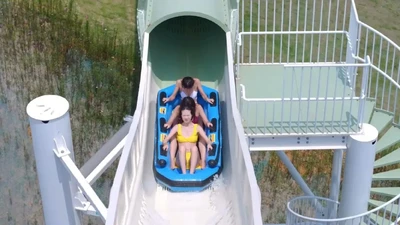 Water Roller Coaster | When Speed Embraces the Splash: Igniting a Water Carnival Feast2025/12/30Have you ever imagined experiencing the extreme speed of a roller coaster on a winding waterway?Have you ever craved the dual shock of weightlessness and centrifugal force amidst cool splashes?Introdu...
Water Roller Coaster | When Speed Embraces the Splash: Igniting a Water Carnival Feast2025/12/30Have you ever imagined experiencing the extreme speed of a roller coaster on a winding waterway?Have you ever craved the dual shock of weightlessness and centrifugal force amidst cool splashes?Introdu...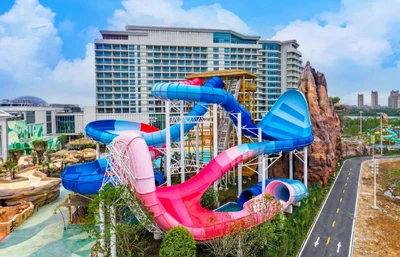 Double Storm, Ultimate Speed — The Interstellar Spiral and Giant Wave Rolling Combination Ignites Water Park Thrills2025/12/21In today’s amusement market, where guests constantly demand extreme experiences, single-dimensional thrills can no longer satisfy increasingly discerning visitors. As an industry innovation leader an...
Double Storm, Ultimate Speed — The Interstellar Spiral and Giant Wave Rolling Combination Ignites Water Park Thrills2025/12/21In today’s amusement market, where guests constantly demand extreme experiences, single-dimensional thrills can no longer satisfy increasingly discerning visitors. As an industry innovation leader an...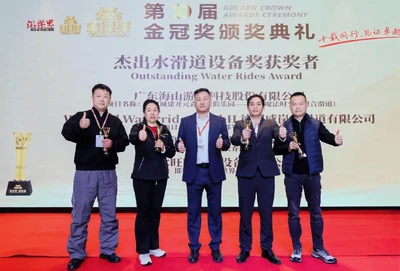 Technology Forges Extraordinary Experiences, Professionalism Sets Industry Benchmarks — Haisan Amusement Wins2025/12/13Technology Forges Extraordinary Experiences, Professionalism Sets Industry Benchmarks— Haisan Amusement Wins "Outstanding Water Rides Award" at the 2025 Golden Crown AwardsRecently, the 202...
Technology Forges Extraordinary Experiences, Professionalism Sets Industry Benchmarks — Haisan Amusement Wins2025/12/13Technology Forges Extraordinary Experiences, Professionalism Sets Industry Benchmarks— Haisan Amusement Wins "Outstanding Water Rides Award" at the 2025 Golden Crown AwardsRecently, the 202...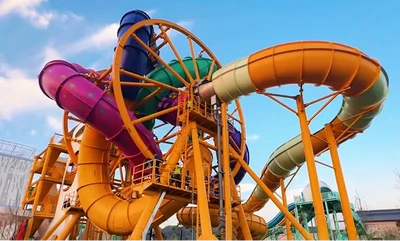 The Super Rolling Slide: A Revolution in Rotation and Dynamic Water Play2025/11/26In an era where guests constantly demand extreme thrills, water play has evolved beyond simple speed into a sensory art form engaging with gravity. As an industry innovation leader and full-chain serv...
The Super Rolling Slide: A Revolution in Rotation and Dynamic Water Play2025/11/26In an era where guests constantly demand extreme thrills, water play has evolved beyond simple speed into a sensory art form engaging with gravity. As an industry innovation leader and full-chain serv... Haisan Amusement Makes a Splash in Zhengzhou, Leading a New Era of Water Amusement at the 2025 China Leisure Expo!2025/10/23From October 22-24, 2025, the 42nd CAAPA Amusement Facilities and Equipment Expo—the 2025 China (Zhengzhou) Tourism & Leisure Entertainment Industry Expo—was held at the Zhengzhou International...
Haisan Amusement Makes a Splash in Zhengzhou, Leading a New Era of Water Amusement at the 2025 China Leisure Expo!2025/10/23From October 22-24, 2025, the 42nd CAAPA Amusement Facilities and Equipment Expo—the 2025 China (Zhengzhou) Tourism & Leisure Entertainment Industry Expo—was held at the Zhengzhou International...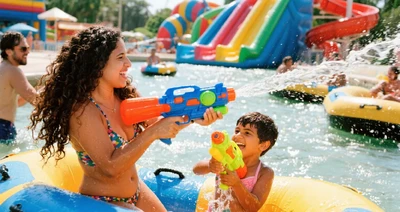 From Feedback to Five Stars: An Insider's Guide to Upgrading Your Water Park Guest Experience2025/09/12A water park's competitive edge ultimately comes down to one thing: the guest experience. From attraction design to daily operations, every detail influences a visitor's decision to return and...
From Feedback to Five Stars: An Insider's Guide to Upgrading Your Water Park Guest Experience2025/09/12A water park's competitive edge ultimately comes down to one thing: the guest experience. From attraction design to daily operations, every detail influences a visitor's decision to return and... The Importance of the Operations Team in Water Park Project2025/07/14Reasonable Selection of Amusement Equipment for Water Park ProjectReasonable selection of amusement equipment is crucial for the success of a water park. Experienced operation teams can provide ration...
The Importance of the Operations Team in Water Park Project2025/07/14Reasonable Selection of Amusement Equipment for Water Park ProjectReasonable selection of amusement equipment is crucial for the success of a water park. Experienced operation teams can provide ration... Haisan Amusement Shines at IAAPA Expo Asia, Unlocking the Infinite Possibilities of Water Amusement2025/07/04From July 1st to 3rd, the IAAPA Expo Asia celebrated its grand opening in Shanghai! Hosted by the International Association of Amusement Parks and Attractions (IAAPA)—the largest international trade ...
Haisan Amusement Shines at IAAPA Expo Asia, Unlocking the Infinite Possibilities of Water Amusement2025/07/04From July 1st to 3rd, the IAAPA Expo Asia celebrated its grand opening in Shanghai! Hosted by the International Association of Amusement Parks and Attractions (IAAPA)—the largest international trade ... Oriental Eden Qingdao Celebrates Grand Opening on June 28, Unveiling an Immersive Exploration of 'Life with Water'2025/07/04Qingdao, China – Nestled on Torch Road in Qingdao's High-tech Zone, Oriental Eden is a world-class, comprehensive cultural tourism project. Spanning 1200 acres with a core project area of 400 acr...
Oriental Eden Qingdao Celebrates Grand Opening on June 28, Unveiling an Immersive Exploration of 'Life with Water'2025/07/04Qingdao, China – Nestled on Torch Road in Qingdao's High-tech Zone, Oriental Eden is a world-class, comprehensive cultural tourism project. Spanning 1200 acres with a core project area of 400 acr...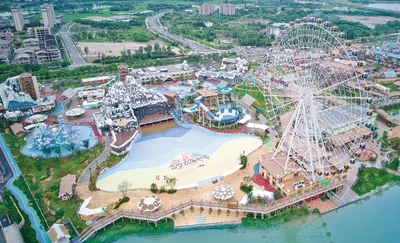 Ji'an Happyvanko Water Park Opens June 20, Unleashing a Summer Splash Carnival in Central Jiangxi2025/06/20JI'AN, China – Ji'an Happyvanko World, a theme park centered on Luling culture and dedicated to the principle of ecological civilization, has been masterfully planned with a spatial structure...
Ji'an Happyvanko Water Park Opens June 20, Unleashing a Summer Splash Carnival in Central Jiangxi2025/06/20JI'AN, China – Ji'an Happyvanko World, a theme park centered on Luling culture and dedicated to the principle of ecological civilization, has been masterfully planned with a spatial structure...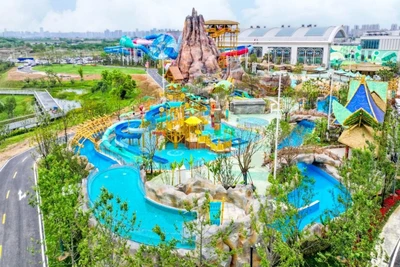 Central China's Flagship Water Park Debuts! Wuhan Kaiyuan Senbo Resort Park Celebrates Grand Opening on June 132025/06/16WUHAN, June 13 – Wuhan Urban Construction Kaiyuan Senbo Resort Park, Central China's first "one-stop" suburban eco-resort for all ages, seasons, and times, celebrated its grand opening ...
Central China's Flagship Water Park Debuts! Wuhan Kaiyuan Senbo Resort Park Celebrates Grand Opening on June 132025/06/16WUHAN, June 13 – Wuhan Urban Construction Kaiyuan Senbo Resort Park, Central China's first "one-stop" suburban eco-resort for all ages, seasons, and times, celebrated its grand opening ... How to Improve Utilization Rate of Water Park Project?2025/06/14The rapid development of the water park industry has led to the presence of water parks of all sizes throughout the country, making it no longer a new and fresh concept for visitors. Therefore, the er...
How to Improve Utilization Rate of Water Park Project?2025/06/14The rapid development of the water park industry has led to the presence of water parks of all sizes throughout the country, making it no longer a new and fresh concept for visitors. Therefore, the er...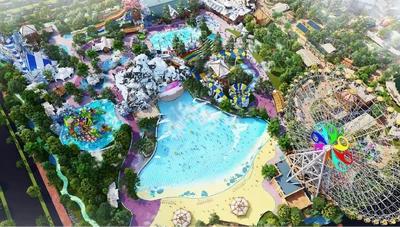 Central Ganzhou's First Comprehensive Modern Theme Park! Water Park Equipment at Jiangxi Ji'an Joy World Enters Final Testing Phase, Aquatic Adventures Soon to be Unlocked.2025/06/06JI'AN, JIANGXI – Located in the Houhe area of southwest Ji'an city center, Jiangxi Province, Ji'an Joy World is a landmark project set to redefine regional entertainment. Covering 18.1 he...
Central Ganzhou's First Comprehensive Modern Theme Park! Water Park Equipment at Jiangxi Ji'an Joy World Enters Final Testing Phase, Aquatic Adventures Soon to be Unlocked.2025/06/06JI'AN, JIANGXI – Located in the Houhe area of southwest Ji'an city center, Jiangxi Province, Ji'an Joy World is a landmark project set to redefine regional entertainment. Covering 18.1 he...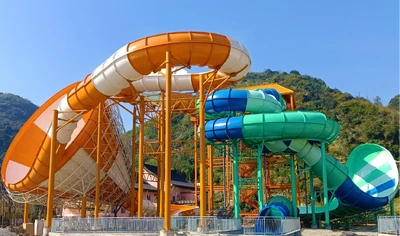 Wenzhou's Largest Water Park! Wonderful Mermaid Water World Kicked Off May 31st for Cool Summer Thrills and All-Ages Fun!2025/06/05WENZHOU, Chin – On May 31st, "Wonderful Mermaid Water World," the core project of Wenzhou Paradise Phase III, celebrated its grand opening. This large-scale water amusement complex, situate...
Wenzhou's Largest Water Park! Wonderful Mermaid Water World Kicked Off May 31st for Cool Summer Thrills and All-Ages Fun!2025/06/05WENZHOU, Chin – On May 31st, "Wonderful Mermaid Water World," the core project of Wenzhou Paradise Phase III, celebrated its grand opening. This large-scale water amusement complex, situate...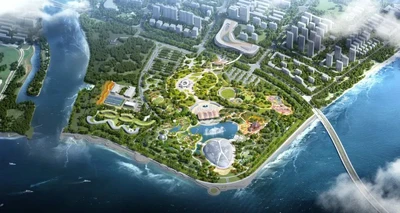 Asia's First:The global brand launch and ESG Sustainable Development Forum for Qingdao Oriental Eden was held today2025/05/30QINGDAO, CHINA – May 28, 2024 – The global brand launch and ESG Sustainable Development Forum for Qingdao Oriental Eden was held today at the project site, where it was officially announced that the...
Asia's First:The global brand launch and ESG Sustainable Development Forum for Qingdao Oriental Eden was held today2025/05/30QINGDAO, CHINA – May 28, 2024 – The global brand launch and ESG Sustainable Development Forum for Qingdao Oriental Eden was held today at the project site, where it was officially announced that the... Wuhan Kaiyuan Senbo Resort to Open on June 13th — Central China's Largest All-Weather Water Park Set for Grand Debut2025/05/21On May 16th, Wuhan Kaiyuan Senbo Resort initiated its stress test, with its indoor and outdoor water parks becoming the main attraction. This "resort kingdom," built with an investment of 2....
Wuhan Kaiyuan Senbo Resort to Open on June 13th — Central China's Largest All-Weather Water Park Set for Grand Debut2025/05/21On May 16th, Wuhan Kaiyuan Senbo Resort initiated its stress test, with its indoor and outdoor water parks becoming the main attraction. This "resort kingdom," built with an investment of 2....